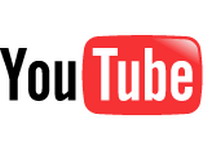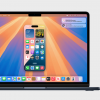For most people, watching YouTube content on a big television screen will constitute a sub-optimal viewing experience. The video clips must be searched individually and just as you are starting to enjoy something, it ends and you have to search for something else to watch. And, just to give the curmudgeons more fodder for estival nay saying, only a small portion of YouTube's vast library is currently available on AppleTV.
I acknowledge all of the problems with this baby step towards the future and I beg you to ignore them. YouTube's commitment to transcode its library to the H.264 video format and the content deal they have struck with Apple are serious potential game changers.
Later this month, Apple will release the iPhone and it will have some features that are so important, it's worth taking a minute to think about them. iPhones will have 3G network connectivity as well as Wi-Fi connectivity. This means that they will be capable of playing video content from YouTube almost as quickly and easily as the content currently plays on your computer. Whether or not the iPhone is a successful piece of consumer electronics equipment, its impact on the media business and how we consume media will be profound. 
First, let's think about what YouTube is and how it is used. YouTube is not Television. It is a video-based social network that facilitates the consumption of video snacks. These are short (under 5 minutes), relatively low-resolution video clips that are meant to be consumed immediately while leaning forward (like at your computer). The Google sales department has a PowerPoint deck that says that prime time for YouTube is during the business day and on Saturday afternoons. This is not when most Television is consumed — YouTube is a new and important video art form.
When you think of all of the other places one might consume video snacks, the first thing that comes to mind is mobile. Aside from your personal computer, your mobile device is probably the next most powerful computer you own. At your office, you can consume video snacks while sorting through your email. They're short and if your boss doesn't catch you, it's a nice way to break up the day. But, in a very real way, a mobile device may provide an even better environment to consume video snacks. Especially if the iPhone lives up to its promise and delivers clips in contextual, rich media emails or widgets from trusted sources in your social network
So why should you care about a very expensive handset from Apple and some low-res video content you can get faster and easier elsewhere?
Because you must imagine a time, in the very near future, when the handsets are free with a wireless plan and all of the content that any publisher wants to make available to consumers is just a click away from any mobile customer anytime and anywhere. Remember, mobile customers seriously outnumber computer users and broadband households. In fact, depending on the country, the number of mobile customers is on par with, or in some cases exceeds, television households. If consumers demonstrate a preference for mobile video snacking, this transition will not take long. Mobile life cycles average two years, so we may see extremely wide adoption of this technology inside anyone's five year plan.
If you are thinking that YouTube is filled with user-generated content that no one wants to watch, you are falling into a very dangerous, last-century line of thought. Quality is a highly subjective, and very fluid concept. Do not use your level of taste or your personal perception of "quality content" to impact your understanding of the potentially dramatic sociological change that is occurring around us. Popularity has never been a measure of quality and quality has certainly never been a measure of popularity. And, most important of all — the pure production value of this medium will steadily increase until it is indistinguishable from other video consumption tools. Over time, tastes change — this is an axiom of evolution. Need a history lesson? Look at video production prior to and post the launch of MTV or have a look at the 1971 and 2005 versions of Willy Wonka (Charlie) and the Chocolate Factory. Camera angles, lighting, shot composition, editorial, directorial — you name the production element, and you can be sure the concept of quality has changed over time.
I spent a good part of this evening enjoying healthy video snacks from YouTube on my AppleTV. No, the content didn't look great on my 60" flat screen, but I didn't care. What I saw was the future. And it's what you should see too.
About the Author: Shelly Palmer is Managing Director of Advanced Media Ventures Group LLC and the author of Television Disrupted: The Transition from Network to Networked TV (2006, Focal Press). Shelly is also the 1st vice president of the National Academy of Television Arts & Sciences, NY and Chairman of the Advanced Media Committee of the Emmy Awards. You can read Shelly's blog at http://www.emmyadvancedmedia.com. Shelly can be reached at shelly@palmer.net.






























